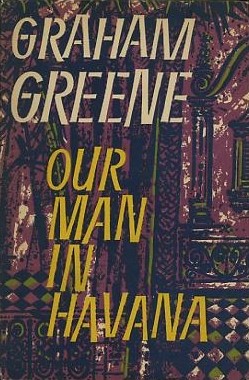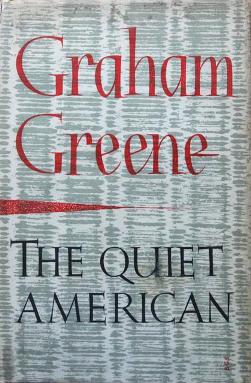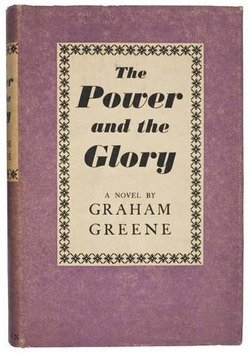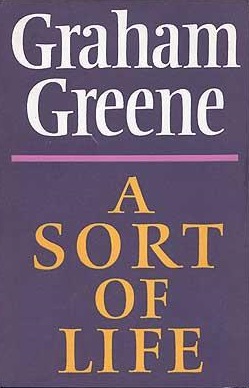
An autobiography, sometimes informally called an autobio, is a self-written biography of one's own life.

Henry Graham Greene was an English writer and journalist regarded by many as one of the leading novelists of the 20th century.

Our Man in Havana (1958) is a novel set in Cuba by the British author Graham Greene. Greene uses the novel to mock intelligence services, especially the British MI6, and their willingness to believe reports from their local informants. The book predates the Cuban Missile Crisis, but certain aspects of the plot, notably the role of missile installations, appear to anticipate the events of 1962.

The Heart of the Matter (1948) is a novel by English author Graham Greene. The book details a life-changing moral crisis for Henry Scobie. Greene, a former British intelligence officer in Freetown, British Sierra Leone, drew on his experience there. Although Freetown is not mentioned in the novel, Greene confirms the location in his 1980 memoir, Ways of Escape.
Winston Mawdsley Graham OBE, born Winston Grime, was an English novelist best known for the Poldark series of historical novels set in Cornwall, though he also wrote numerous other works, including contemporary thrillers, period novels, short stories, non-fiction and plays. Winston Graham was the author's pseudonym until he changed his name by deed poll from Grime to Graham on 7 May 1947.

The Quiet American is a 1955 novel by English author Graham Greene.

The Power and the Glory is a 1940 novel by British author Graham Greene. The title is an allusion to the doxology often recited at the end of the Lord's Prayer: "For thine is the kingdom, the power, and the glory, forever and ever, amen." It was initially published in the United States under the title The Labyrinthine Ways.

George Norman Douglas was a British writer, now best known for his 1917 novel South Wind. His travel books, such as Old Calabria (1915), were also appreciated for the quality of their writing.

Sir Francis Osbert Sacheverell Sitwell, 5th Baronet CH CBE was an English writer. His elder sister was Edith Sitwell and his younger brother was Sacheverell Sitwell. Like them, he devoted his life to art and literature.
Literary Impressionism is influenced by the European Impressionist art movement; as such, many writers adopted a style that relied on associations. The Dutch Tachtigers explicitly tried to incorporate Impressionism into their prose, poems, and other literary works. Much of what has been called "impressionist" literature is subsumed into several other categories, especially Symbolism, its chief exponents being Baudelaire, Mallarmé, Rimbaud, Verlaine and Laforgue, and the Imagists. It focuses on a particular character's perception of events. The edges of reality are blurred by choosing points of view that lie outside the norm.

The Comedians (1966) is a novel by Graham Greene. Set in Haiti under the rule of François "Papa Doc" Duvalier and his secret police, the Tontons Macoutes, the novel explores political repression and terrorism through the figure of an English hotel owner, Brown.

The Human Factor is an espionage novel by Graham Greene, first published in 1978 and adapted into the 1979 film The Human Factor, directed by Otto Preminger using a screenplay by Tom Stoppard.

Stamboul Train is the second significant novel by Graham Greene. Set on a train journey from Ostend to Istanbul, the book was renamed Orient Express when it was published in the United States. The novel appeared in 1932 and was Greene's first true success. It was taken on by the Book Society and in 1934 adapted as the film Orient Express.
Graham Greene (1904–1991) was an English novelist regarded by many as one of the greatest writers of the 20th century. Combining literary acclaim with widespread popularity, Greene acquired a reputation early in his lifetime as a major writer, both of serious Catholic novels, and of thrillers. He was shortlisted, in 1966 and 1967, for the Nobel Prize for Literature. He produced over 25 novels, as well as several plays, autobiographies, and short stories.

It's a Battlefield is an early novel by Graham Greene, first published in 1934. Graham Greene later described it as his "first overtly political novel". Its theme, said Greene, is "the injustice of man's justice." Later in life, Greene classified his major books as "novels" and his lighter works as "entertainments"; he ranked It's a Battlefield as a novel and not a mere entertainment.

Rumour at Nightfall is the third novel by Graham Greene, published in 1931. Like his second novel, The Name of Action, it failed to repeat the success of his first novel, The Man Within; Greene was to suppress both his second and third novels.

The Name of Action is Graham Greene's second novel, published in 1930. The book was badly received by critics, and suffered poor sales. Greene later repudiated the book and it has remained out of print ever since.

The Tailor of Panama is a 1996 novel by British writer John le Carré. A 2001 film was released based on the novel.

A Sort of Life is the first volume of autobiography by British novelist Graham Greene, first published in 1971.

In Search of a Character: Two African Journals is a slim volume, part travel book, part novelist’s journal, written by English author Graham Greene and first published in 1961. Greene set two of his novels in Africa; A Burnt-Out Case, set in the Belgian Congo, and The Heart of the Matter, set in Sierra Leone. This book contains the journals, not originally intended for publication, that Greene kept on journeys he made for research purposes before writing those two novels.














